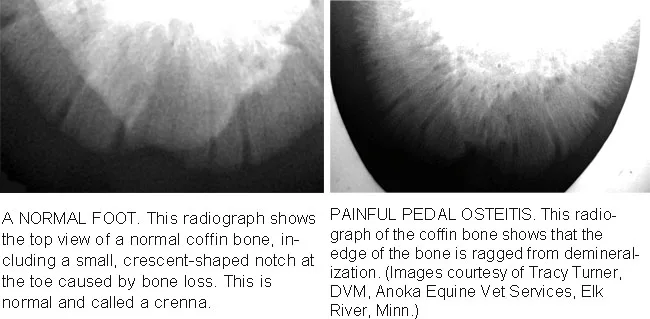American Farriers Journal
American Farriers Journal is the “hands-on” magazine for professional farriers, equine veterinarians and horse care product and service buyers.

Pedal osteitis, an inflammation of the coffin bone usually resulting from severe bruising of the sole or consistent pressure on the bone, often reveals itself through an obvious, crescent-shaped bruise on the bottom of the foot. But in some cases, the condition hides within the hoof even as the horse goes lame and the condition worsens.
Farriers recognizing pedal osteitis can often stop it in its tracks while making the horse comfortable and perhaps returning it to work quickly. But the bone damage can never be undone, and in undiagnosed cases the coffin bone can continue to deteriorate.
Farrier Blake Brown of Penryn, Calif., says the surest sign of pedal osteitis that a horseshoer could see would be a crescent-shaped reddening of the sole under the solar margin of the coffin bone, in front of the apex of the frog. It would be located back from the white line of the foot.
“It’s not always that distinctive, but that’s a good sign that pedal osteitis is present. If you see that moon-shaped reddening, you’ll know that the sole is too thin and the coffin bone is taking a beating,” he says. “It’s a clear indicator that the leading edge of the coffin bone is being abused and is inflamed.”
Brown experienced many such cases while working closely with the Loomis Basin Equine Clinic in Loomis, Calif., for nearly 30 years. He was the clinic’s resident farrier from 1984 until he retired last year.
He warns that farriers…